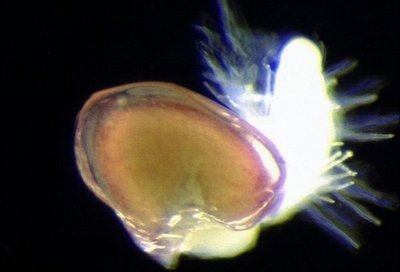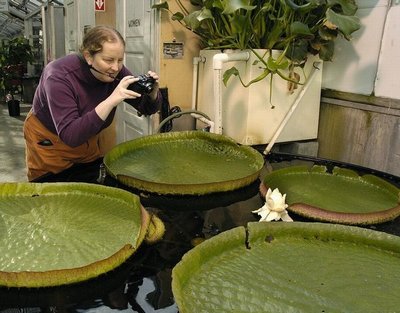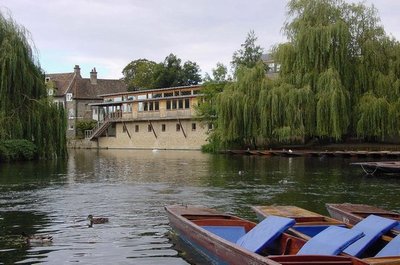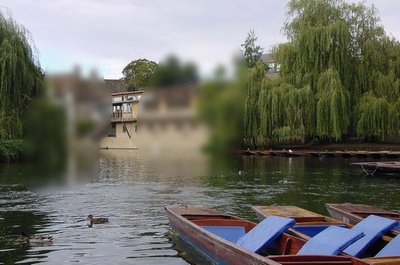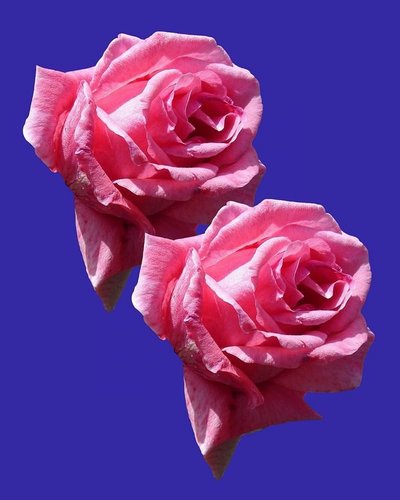September 29, 2005
Visual transformations: Grad student photographer doesn’t let blindness shutter her dreams
Biology graduate students aren’t usually noted for their photography, but Anne Prather is different. In fact, as photographers go, Prather is really different. She’s legally blind. But that hasn’t stopped her from compiling a photography portfolio impressive enough that the department offered her an exhibit. Transformations opens Friday, Sept. 30 in Kincaid Hall.
Prather didn’t take up photography until she was 33, when surgery gave her most of the sight she currently has. Born blind, she spontaneously recovered some sight at age 6 (just colors and edges, she says), but then cataract removal brought detail, including the ability to see textures for the very first time. Prather was so excited by that discovery that she began photographing what was in front of her.
And what was in front of her most often were seeds. Prather studies seed germination. Specifically, she studies what mechanisms make seeds delay their germination. So a lot of her work involves looking at seeds through a microscope. She has a camera attached to the microscope, so she began taking pictures of the seeds.
“I took pictures of seeds, and I took pictures of seeds germinating, and I have pictures where you can see the seed still in the coat and you can see the little root coming out and you can see green inside the seed. I thought and still think that’s absolutely fascinating to watch,” Prather said.
From seeds she graduated to photographing plants, using a digital camera. But although the surgery enabled her to see better than before, Prather still has large gaps in her vision. She’s used Photoshop to create a picture that shows what she actually sees — a picture with blurry spots at random points.
Those gaps didn’t stop her from moving on to photograph landscapes. “I’m composing off these bits of information,” she explained, “so I’ll keep turning until I find the part of the scene that has the most information to my eyes. Of course, if I can see it, anybody can.”
Her visual impairments can definitely make for challenges in photography, but they also confer a few advantages. When Prather’s cataracts were first removed, she says she became “absolutely fascinated” with texture and shape. She hung out in the UW greenhouse, marveling over the variety of both. She has a specific memory of a goblet she owns because it was the first time she recalls seeing and anticipating from the sight what an object would feel like. She describes shadows as being “not natural” to her, and says she’s intrigued by the relationship between shadows and the objects that make them.
“In a very real way I had to learn to see,” Prather said. “I missed the visual development that most people get in early childhood.”
The learning process involved looking at things with truly fresh eyes. Accordingly, many of Prather’s photos are of ordinary things: a flower, a leaf, a seed. But those ordinary things are imbued with the wonder of someone seeing them for the first time. Prather takes nothing for granted.
Prather has adapted some of the tools she works with to make up for her visual impairments. She has the microscope arranged so that the image is bright on a dark field, thus maximizing contrast. She uses a camera with an autofocus because she finds it very difficult to focus her eyes. Until recently, she’s worked strictly with digital cameras, thus allowing herself to take as many shots as she wanted without worrying about wasting film.
However, on a recent trip she was planning to try out film “because now I can see shots in my head that I can’t get with a digital camera.”
Although this is her first exhibit, Prather is no stranger to the arts. Her first degree was in music performance, and she played classical guitar and other instruments professionally before deciding to go back to school in biology. Since taking up photography, she’s compiled 70 images in her portfolio. She says about 20 of these will be exhibited in the show, and there will be card sets of some of the images for sale. Proceeds will go to the support the Botany Greenhouse.
The exhibit will be in the main hallway on the first floor of Kincaid (southeast entrance) through next fall. There will be an opening reception from 4:30 to 6:30 p.m. on Friday, Sept. 30.
